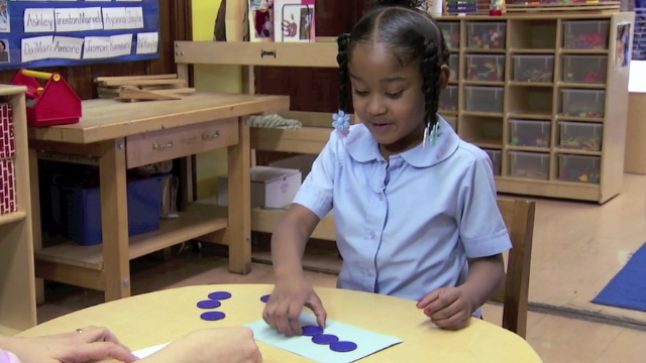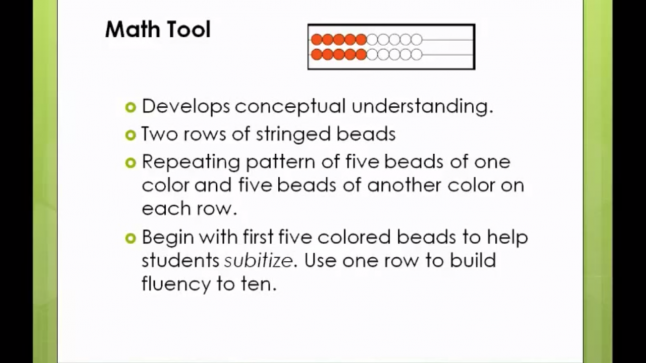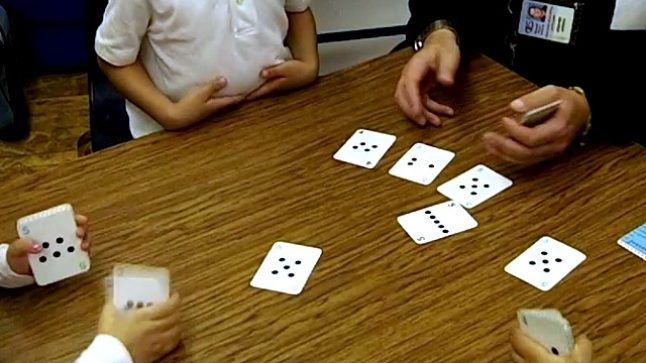Tagged as: Subitizing
Subitize: The Ability to "See" Small Amounts
All children are born with an innate ability to perceive the difference between 1 and 2 objects. With support and experience, they can quickly perceive and name “how many” for collections of 3, 4, and 5 objects. This mathematical ability is called subitizing. From the Latin word meaning suddenly, the term subitize refers to the ability to "see" a small amount of objects and know “how many” there are instantly without counting.
Not all arrangements of the same number are equally easy to subitize — preschoolers will recognize that there are 5 dots quickly if they are arranged like the corners of a square with a dot in the middle, but may be slower or less sure if the 5 dots are in a straight line, particularly if they are very close together. Understanding that subitizing is innate is a good start, but experience matters, too. Children need many experiences of noticing and naming small quantities in a variety of arrangements to strengthen their number sense.
While it’s important that adults get to hear children count out loud, it’s also important that they acknowledge when children correctly identify a small amount without counting it at all.
The above are excerpts from the Collaborative's book Big Ideas of Early Mathematics: What Teachers of Young Children Need to Know (2014).
Browse our collection of resources tagged SUBITIZING.
Series: Focus on the Child
Matching Quantity with Child 3
June 11, 2015
A child produces a small set of counters to match a shown quantity.
- Topic: Number Sense
- Age/Grade Level: Pre-K
- Tags Subitizing, Child 3
Series: Video from Others September 29, 2014
How to Use a Rekenrek
The video gives a great overview of how to use a rekenrek. It also provides a few specific examples of problems that you could give to your students.
- Topic: Number Sense, Number Operations
- Age/Grade Level: Pre-K, Kindergarten, 1st Grade, 2nd Grade, 3rd Grade
- Tags Subitizing, Rekenrek
Series: Ideas at Work March 2, 2013
Down with Naked Numbers
All kinds of confusion can result when children are asked to rattle off the numbers from 1 to 10 or 20 or higher without actually counting something. In our learning labs and activities we are…
- Topic: Counting
- Age/Grade Level: Pre-K, Kindergarten
- Tags Subitizing, Games
Do the math.
Free videos.
Free newsletter packed with ideas.
Free professional learning modules.


